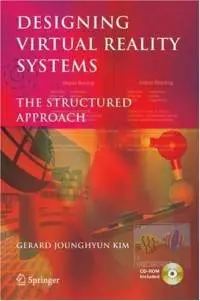Designing Virtual Reality Systems: The Structured Approach
9781852339586 | (1852339586) | Springer | 2005 | 6 MB | RS | FF
Developing and maintaining a VR system is a very difficult task, requiring in-depth knowledge in many disciplines. The difficulty lies in the complexity of having to simultaneously consider many system goals, some of which are conflicting.
This book is organized so that it follows a spiral development process for each stage, describing the problem and possible solutions for each stage. Much more hands-on than other introductory books, concrete examples and practical solutions to the technical challenges in building a VR system are provided.
Part 1 covers the very basics in building a VR system and explains various technical issues in object modeling and scene organization. Part 2 deals with 3D multimodal interaction, designing for usable and natural interaction and creating realistic object simulation. Primarily written for first level graduates, advanced undergraduates and IT professionals will also find this a valuable guide.
‘‘Virtual Reality (VR)’’1 is a field of study that aims to create a system that provides a synthetic experience for its user(s). The experience is dubbed ‘‘synthetic,’’ ‘‘illusory,’’ or ‘‘virtual’’ because the sensory stimulation to the user is simulated and generated by the ‘‘system.’’ For all practical purposes, the system usually consists of various types of displays2 for delivering the stimulation, sensors to detect user actions, and a computer that processes the user action and generates the display output. To simulate and generate virtual experiences, developers often build a computer model, also known as ‘‘virtual worlds’’ or ‘‘virtual environments (VE)’’ which are, for instance, spatially organized computational objects (aptly called the virtual objects), presented to the user through various sensory display systems such as the monitor, sound speakers, and force feedback devices.



